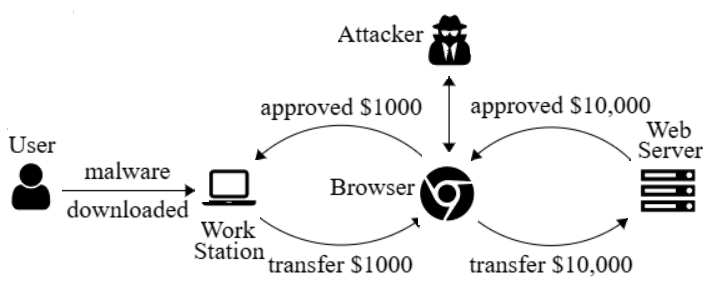Example 5.1.4. One-time Passwords.
To help mitigate replay attacks, an online banking application may require that client use a one-time password (OTP) when submitting transactions. An OTP is a frequently changing value that is known to both the client and the server. Several one-time password schemes exist, most of which make use of a cryptographic hash function with a shared seed between client and server. Periodically the client and server update to a new hash based on the seed and without the seed it is impossible to know what the next hash will be. By using an OTP anyone who intercepts the traffic will not be able to perform a replay attack as the password will not be current.

